Cribraria species have a feature that makes them easy to recognise in the field with the aid of a hand lens: their fruiting bodies have a distinctive net—called the peridial net—that encases the spore mass. A second feature of Cribraria spp. are the small granules of calcium called dictydine granules that are found on the net, nodes and sometimes the stem and spores. These are visible with a compound microscope.
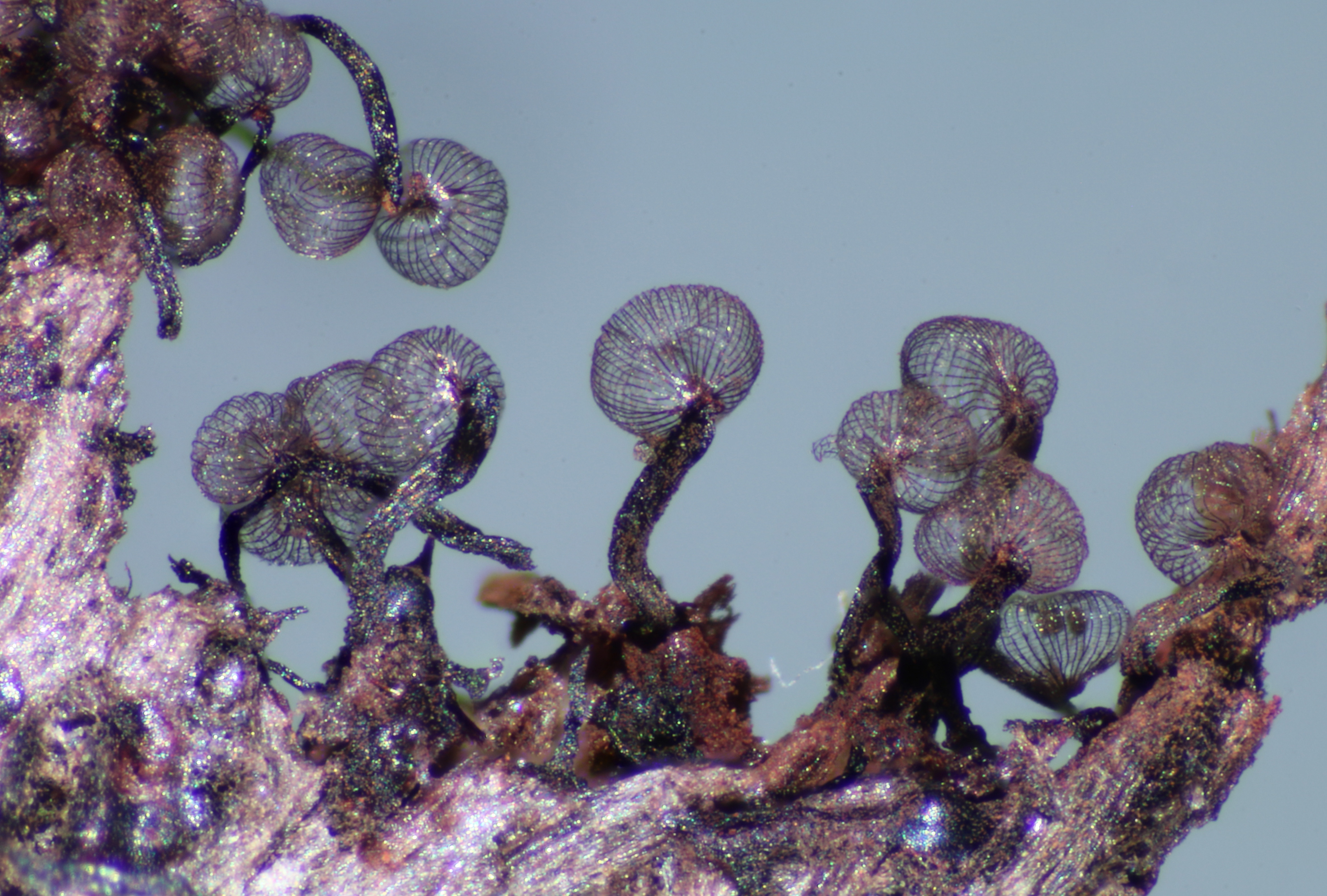
The ease of identification of members of the genus in the field encouraged me to put a species name to my collections, which to date (November 2017) has grown to about 120. Little did I know at the time that, to quote Bruce Ing (1999) ‘the genus is difficult and it is not possible to assign every collection to a known taxon.’
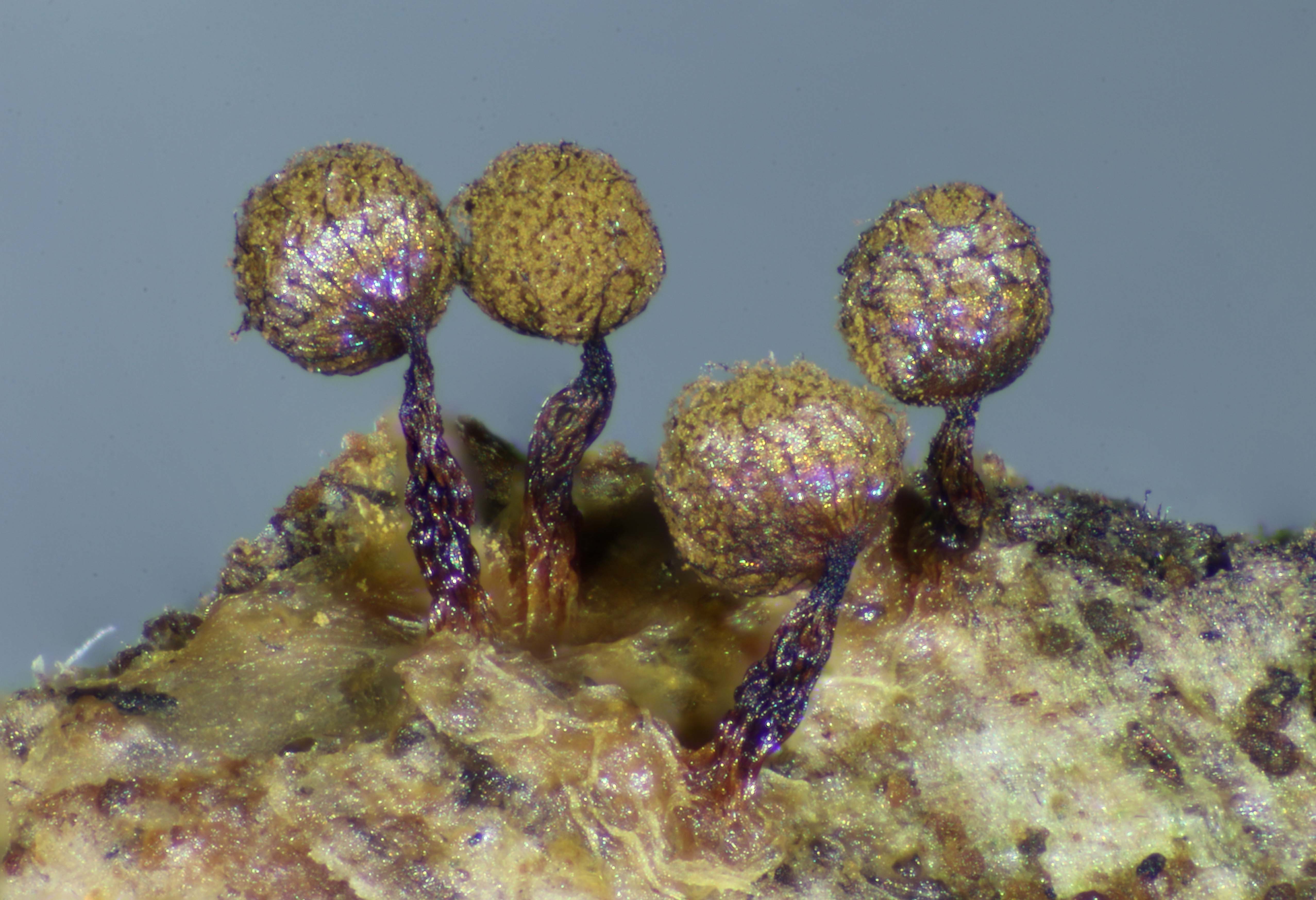
The difficulty in identifying Cribraria species is well documented and it is thought that examining fresh material is preferable because their colour may change with age. Their small fruiting bodies (they rarely exceed 2 mm tall) mature over a relatively short time so even sporangia arising from the same plasmodium can sometimes look different enough to be assigned to more than one species. Most texts state that the relatively size of stalk to sporotheca is constant in Cribraria species, and Adamonte and Eliasson (2010) in their study of Cribraria species in the Great Smoky Mountains National Park in Eastern USA agree, stating: ‘this variation appears to be relatively limited in Cribraria and stalk length tends to be fairly diagnostic.’
My observations indicate that this is not always the case. In many species of myxomycete with stalked sporangia—including Cribraria spp.—stalk length can be markedly different in fruiting bodies arising from the same plasmodium depending on whether they appear on the upper or underside of the substrate.
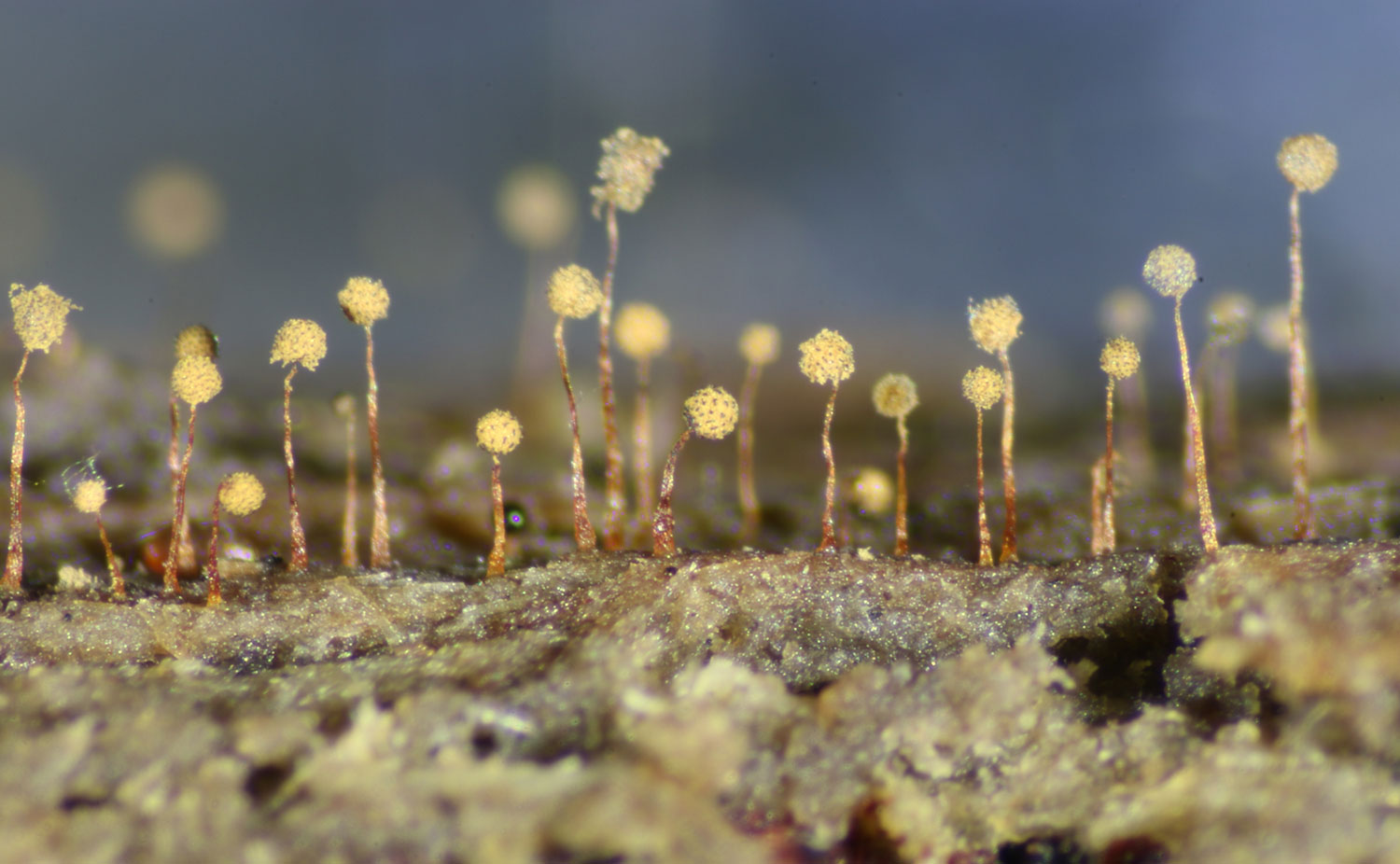
Further identification difficulties arise because some belong to species complexes and in some instances the texts don’t agree. During the above-mentioned study, researchers who attempted to compare their collections with the type specimens, discovered that these were either scanty or lost.
Yet another difficulty when identifying Cribraria species is that they don’t have features—for example a columella and capillitium—that can assist in the identification of species in other genera. Therefore, the main features to observe include the peridial net which may or may not have nodes and/or a calyculus; and the spores, which are approximately the same size in each species and are relatively featureless.
Most texts I have describe European, American or New Zealand collections (there is still no text devoted to Australian myxomycetes) and they almost invariably state that Cribraria spp. are associated with decaying pines. ‘The majority of species are found on coniferous wood, but this is also not an exclusive character’ (Ing 1999). There are some ancient pines in the Cupressaceae and Podocarpaceae families in the remote rainforest and highland areas of Tasmania but at Black Sugarloaf the forests are dominated by Eucalyptus spp. and blackwood (Acacia melanoxylon). I occasionally find Cribraria spp. on logs of dogwood (Pomaderris apetala), blanketleaf (Bedfordia salicina) or blackwood, but they are more often collected from eucalypt logs and stumps, especially those that are very large, very severely decayed and covered in bryophytes.
Several years ago I made a serious attempt to identify the 90 collections of Cribraria species I had amassed since 2010; I resumed this project in 2017 by which time the size of the collection had increased to 120 species. Several are easy to determine even without resorting to microscopy, but most are difficult and in some cases impossible to identify with certainty. I will continue to work through my collections to get some idea of relative abundance. The text I consulted are listed below.
Cribraria cancellata and C. mirabilis
Cribraria cancellata and C. mirabilis were until relatively recently included in a separate genus, Dictydium, because their peridial net has 40-50 longitudinal ribs rather than a network of threads. C. cancellata, which often appears in extensive colonies, is maroon or reddish brown; the plasmodium sometimes stains the substrate the same colour.
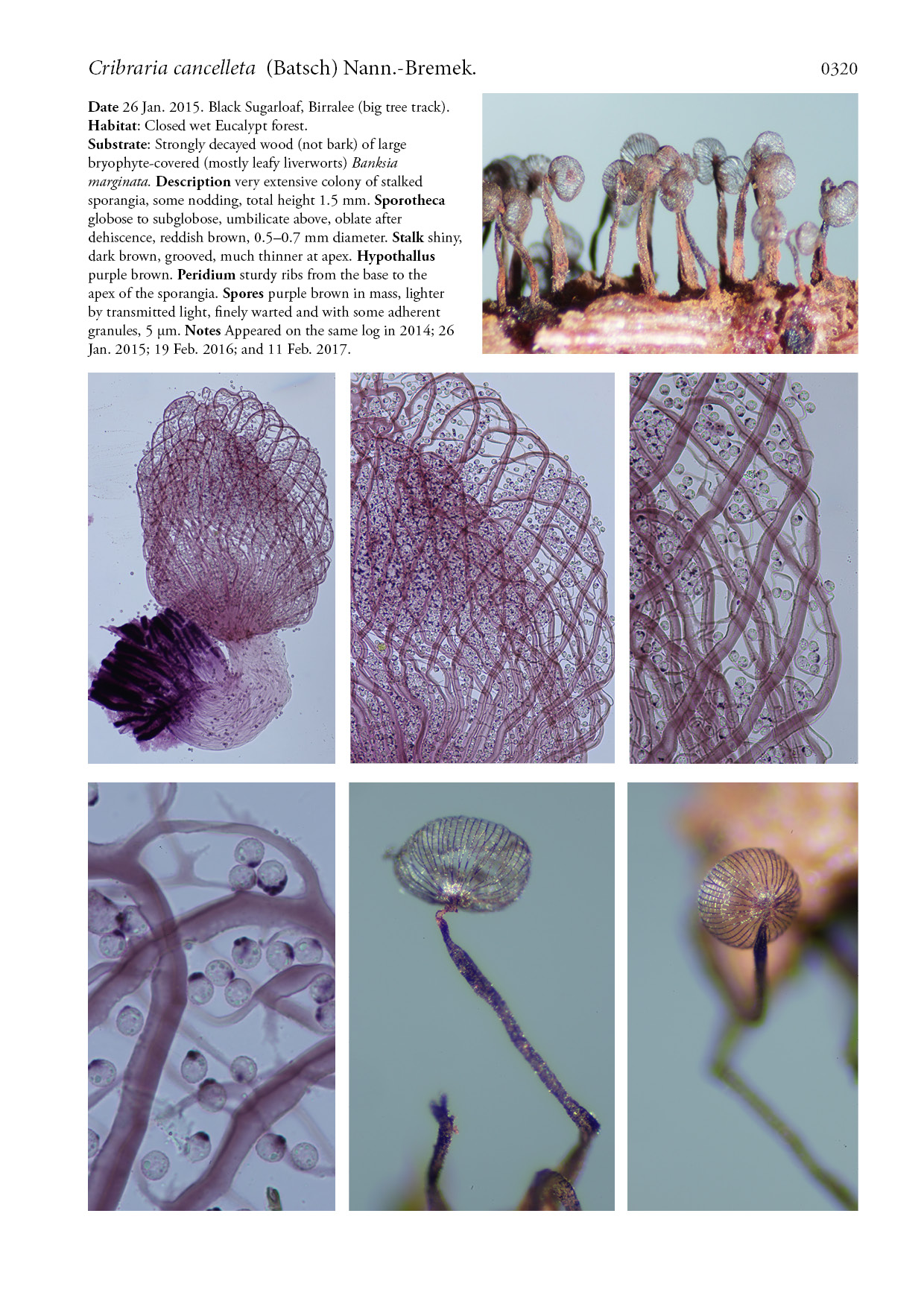
Cribraria cancellata var. fusca
I have several collections of brown C. cancellata that some authors regarded as a variety—C. cancellata var. fusca. However, according to Nannenga-Bremekamp (1991):
‘differs from C. cancellata in the presence of a small or irregular, shining cup at the base of the sporangium … [but] since the size of the cup varies between small to absent, the variety is hardly worthy of recognition.’
Cribraria mirabilis
Cribraria mirabilis also has longitudinal ribs, but they reach to about half of the sporotheca before grading into a net near the apex.
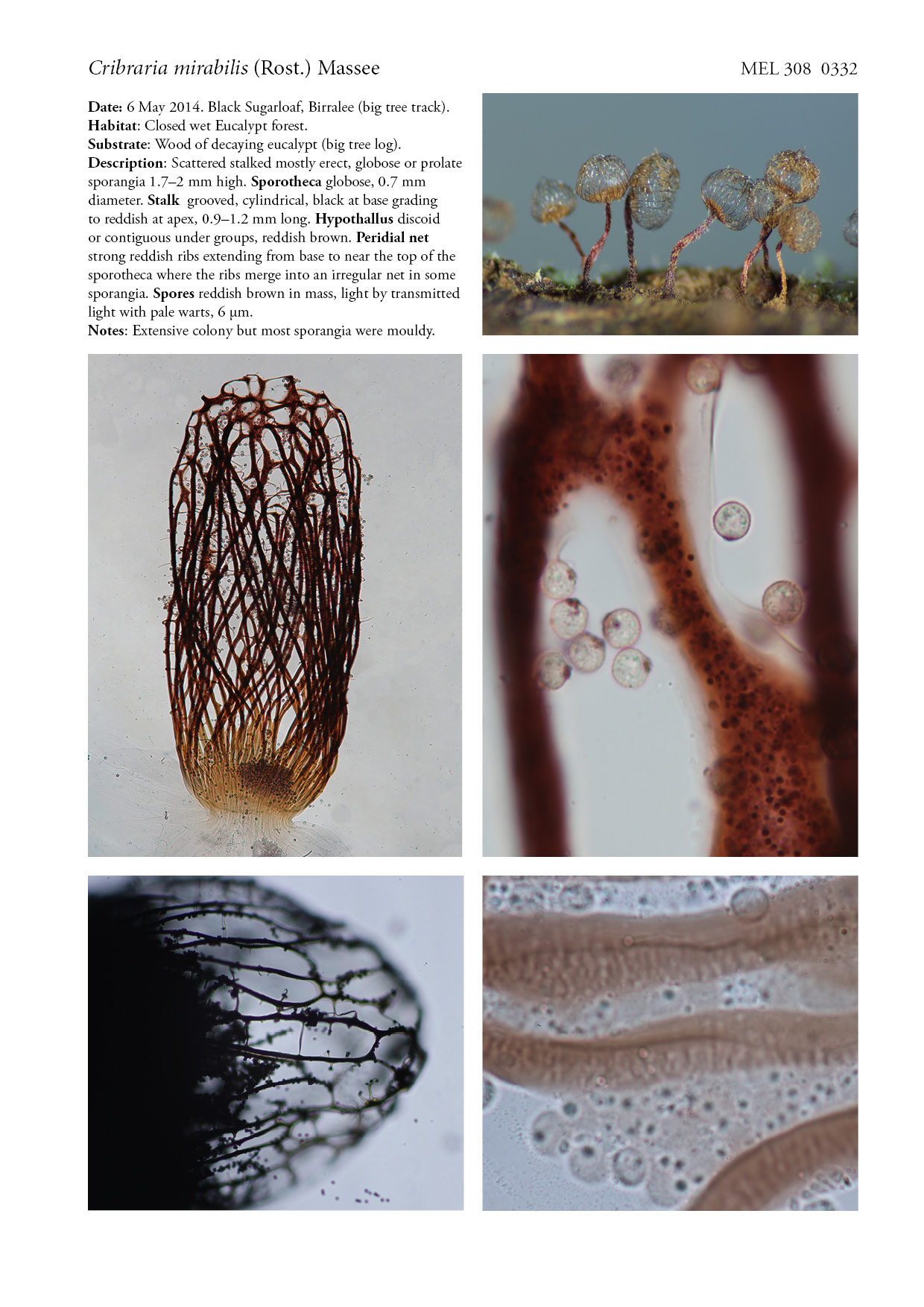
The following collections have not been as straightforward to determine as the species once included in the former genus Dictydium. Below are colour plates of my collections:
Cribraria confusa
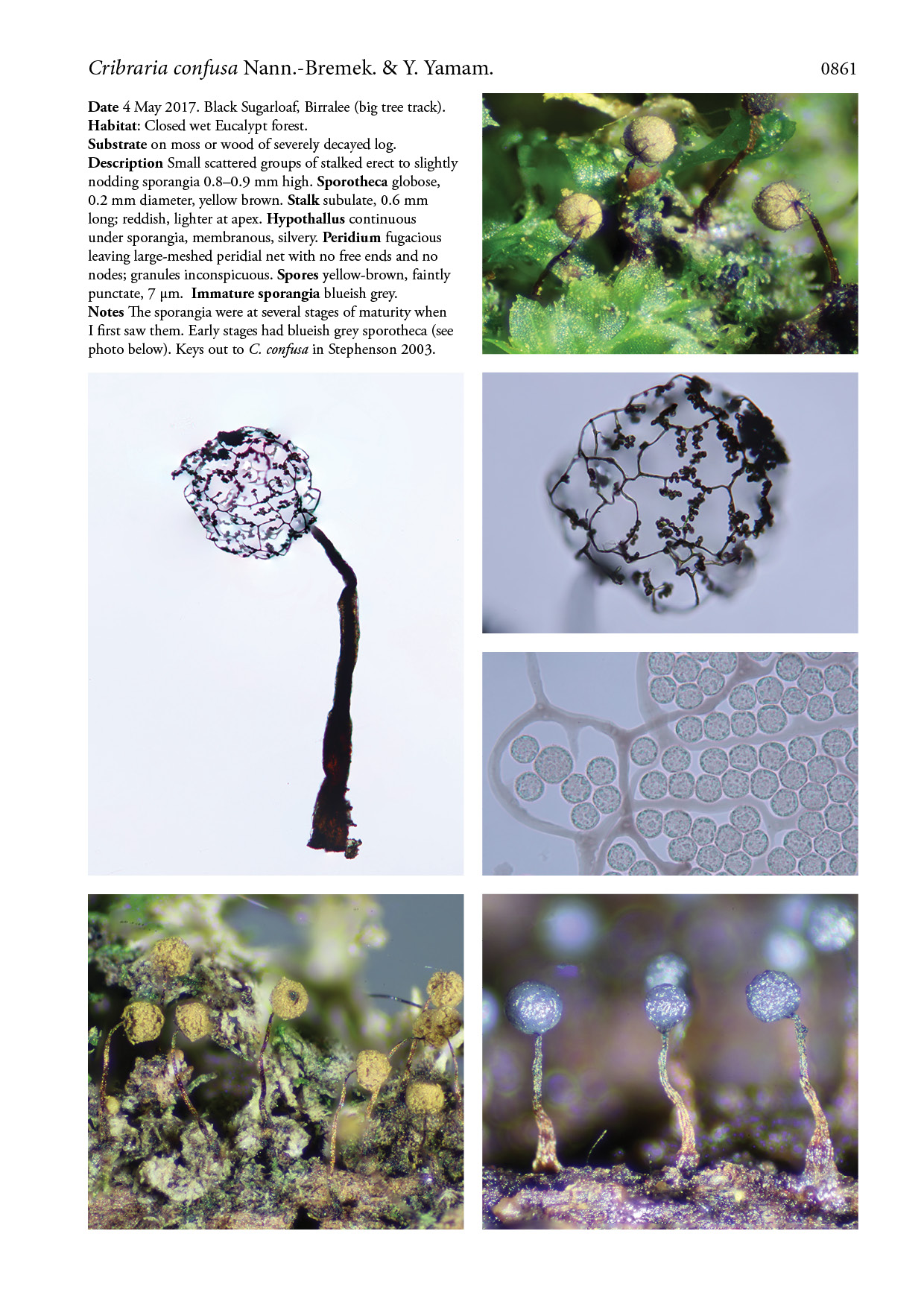
Cribraria dictydioides
Considered a variety of C. intricata by some authors (e.g. Poulain et al. 2011) but without a distinct calyculus. The two forms differ in ecological requirements (Stephenson 2003). Possibly confined to the tropics but recorded from Australia and New Zealand (Ing 1999).
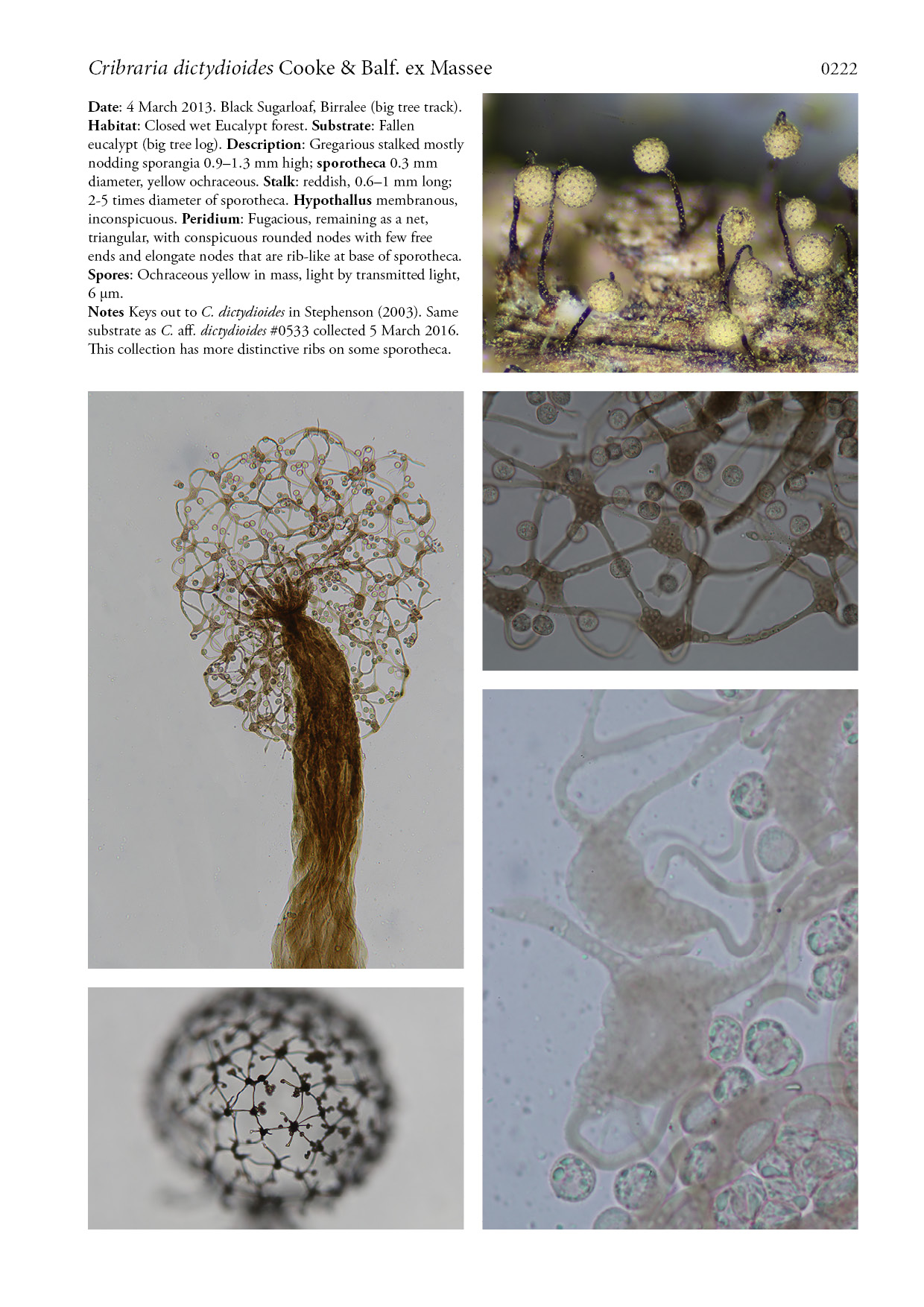
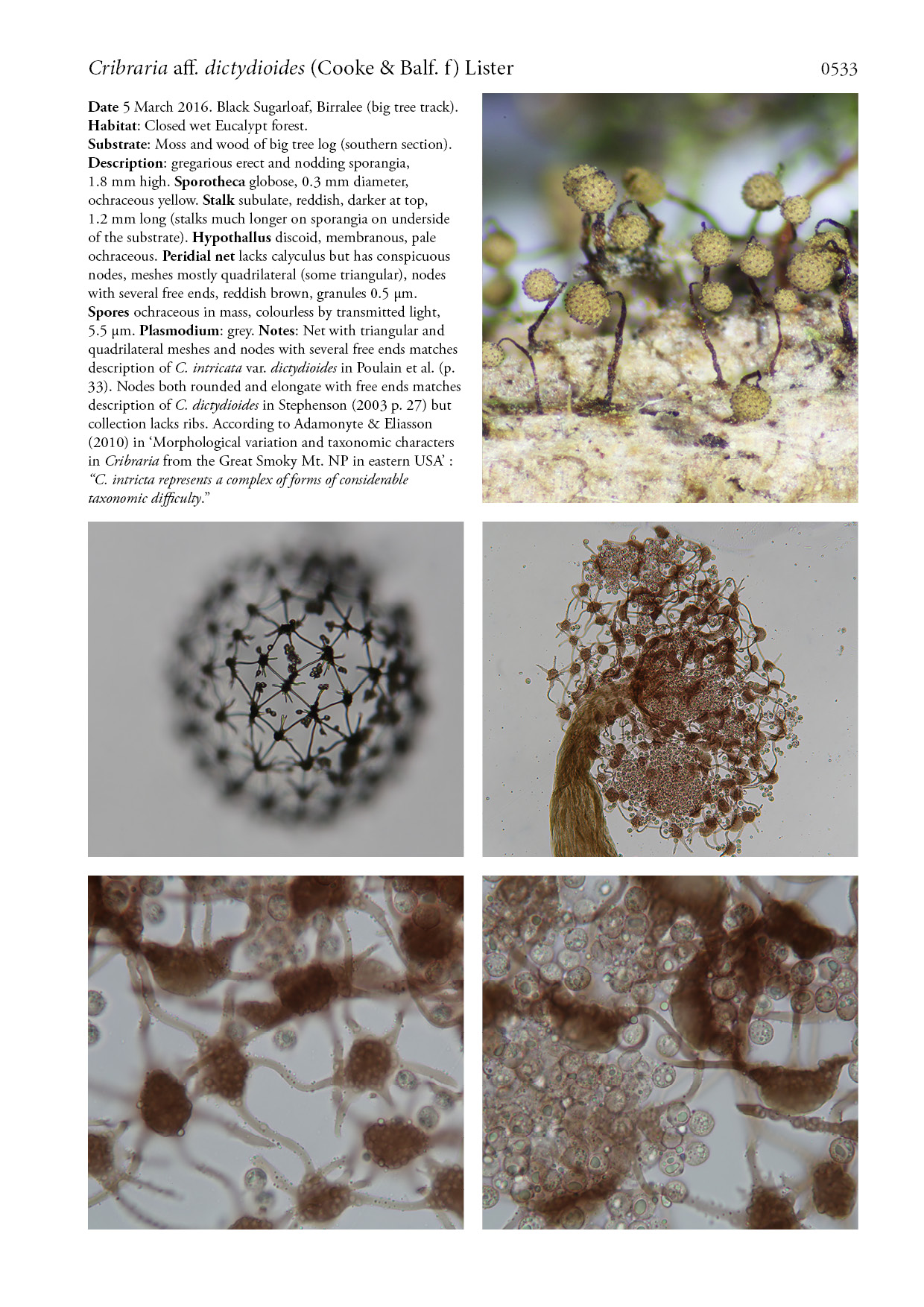
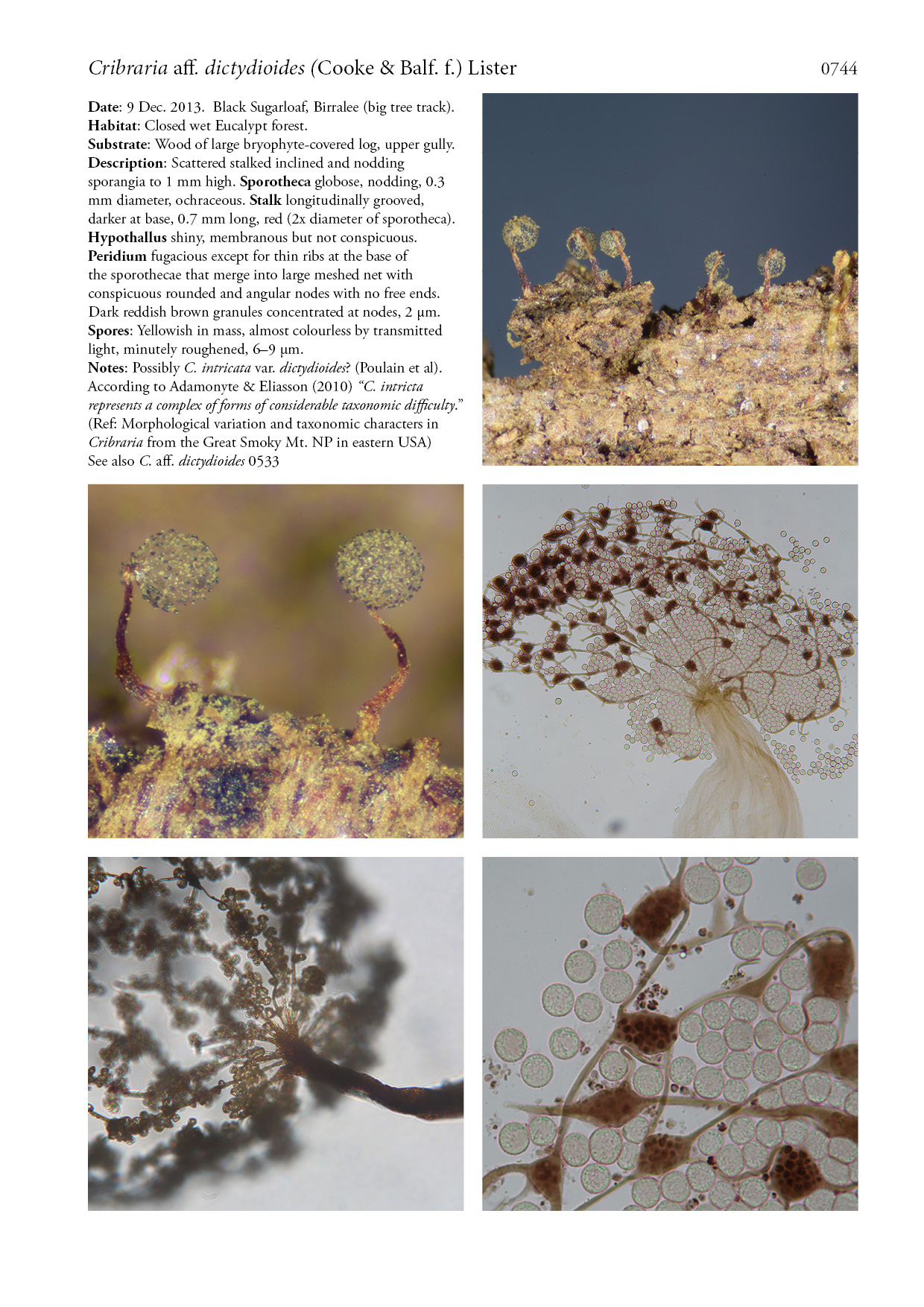
Cribraria ferruginea
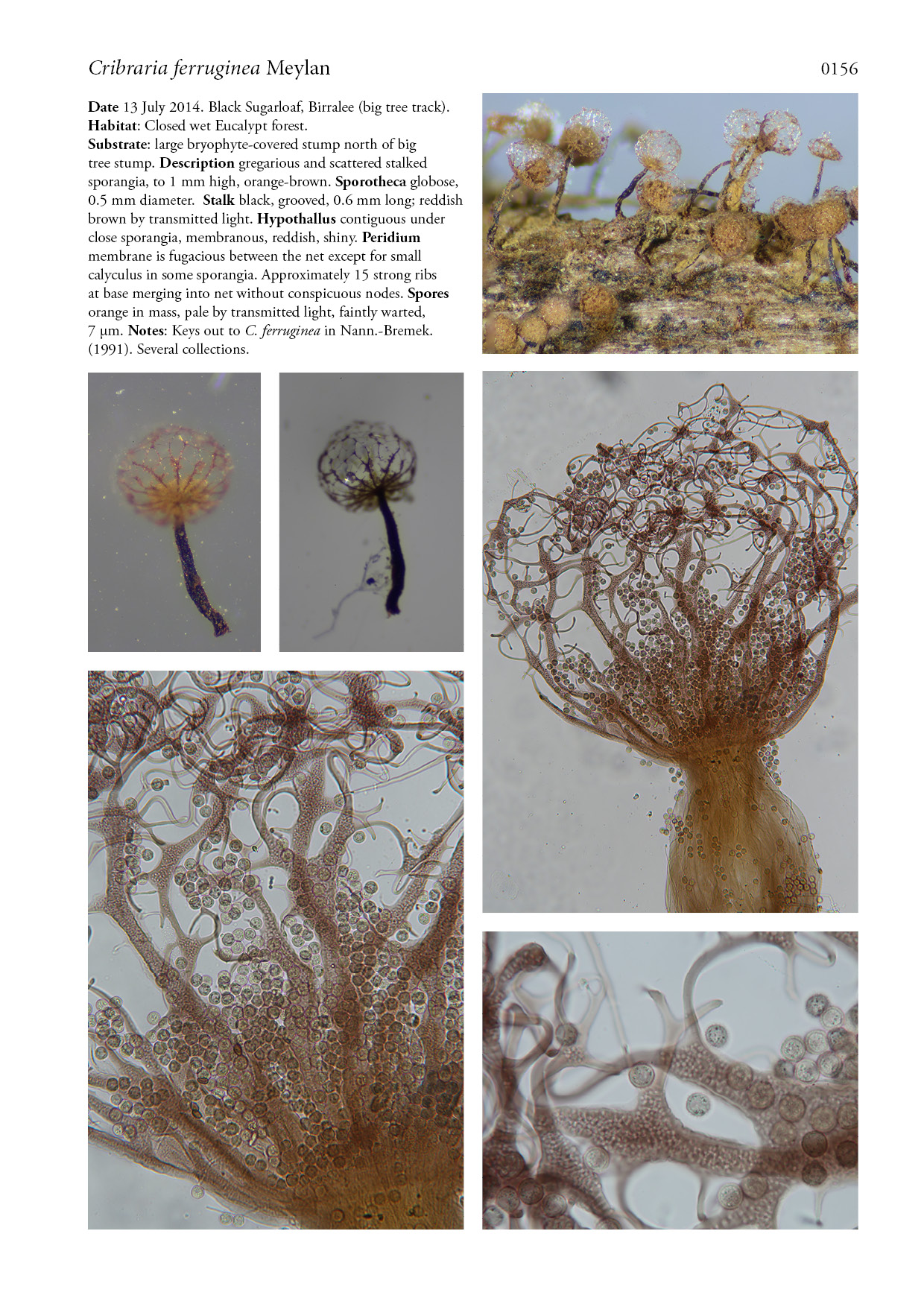
Cribraria intricata
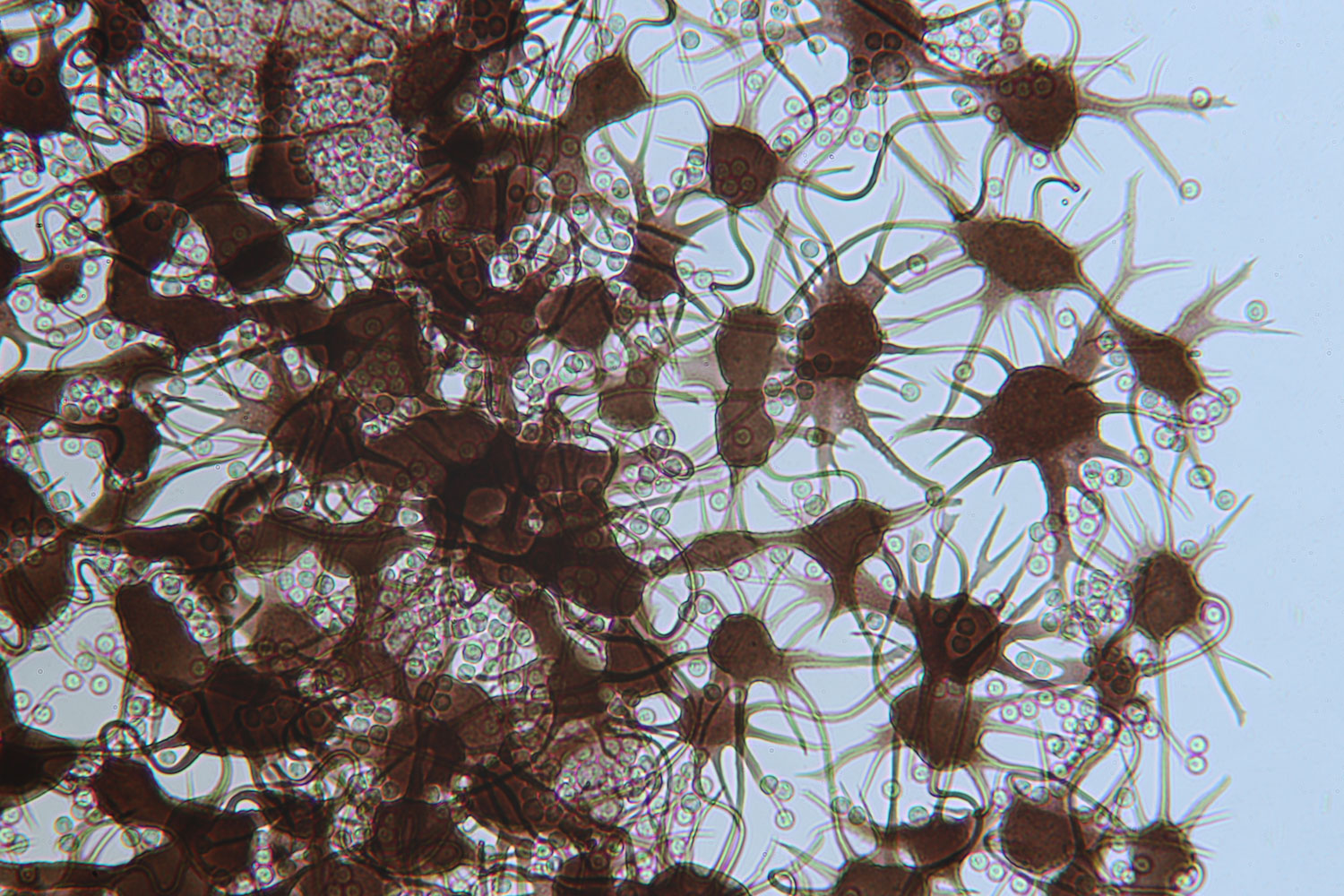
Cribraria microcarpa
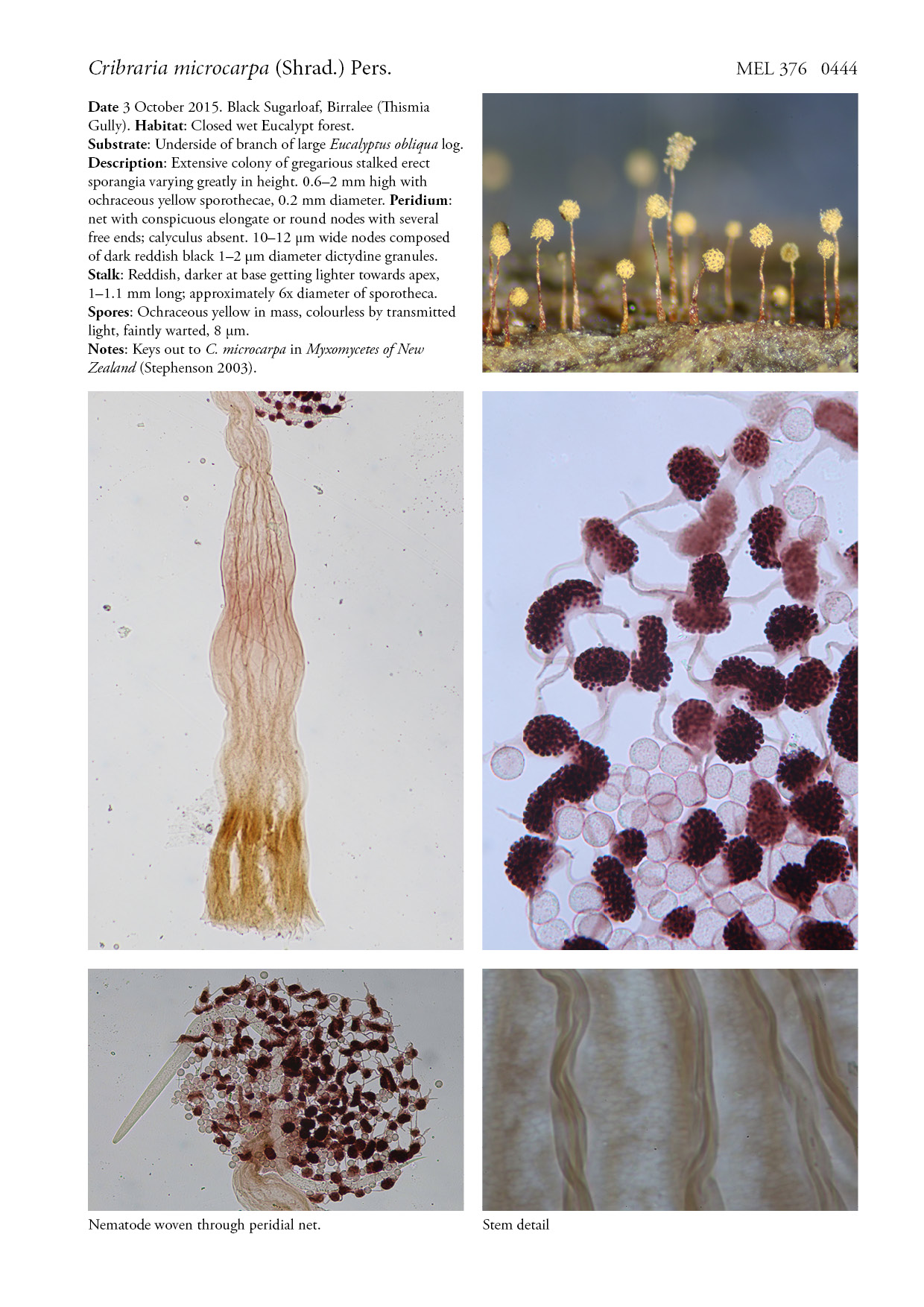
Cribraria martinii
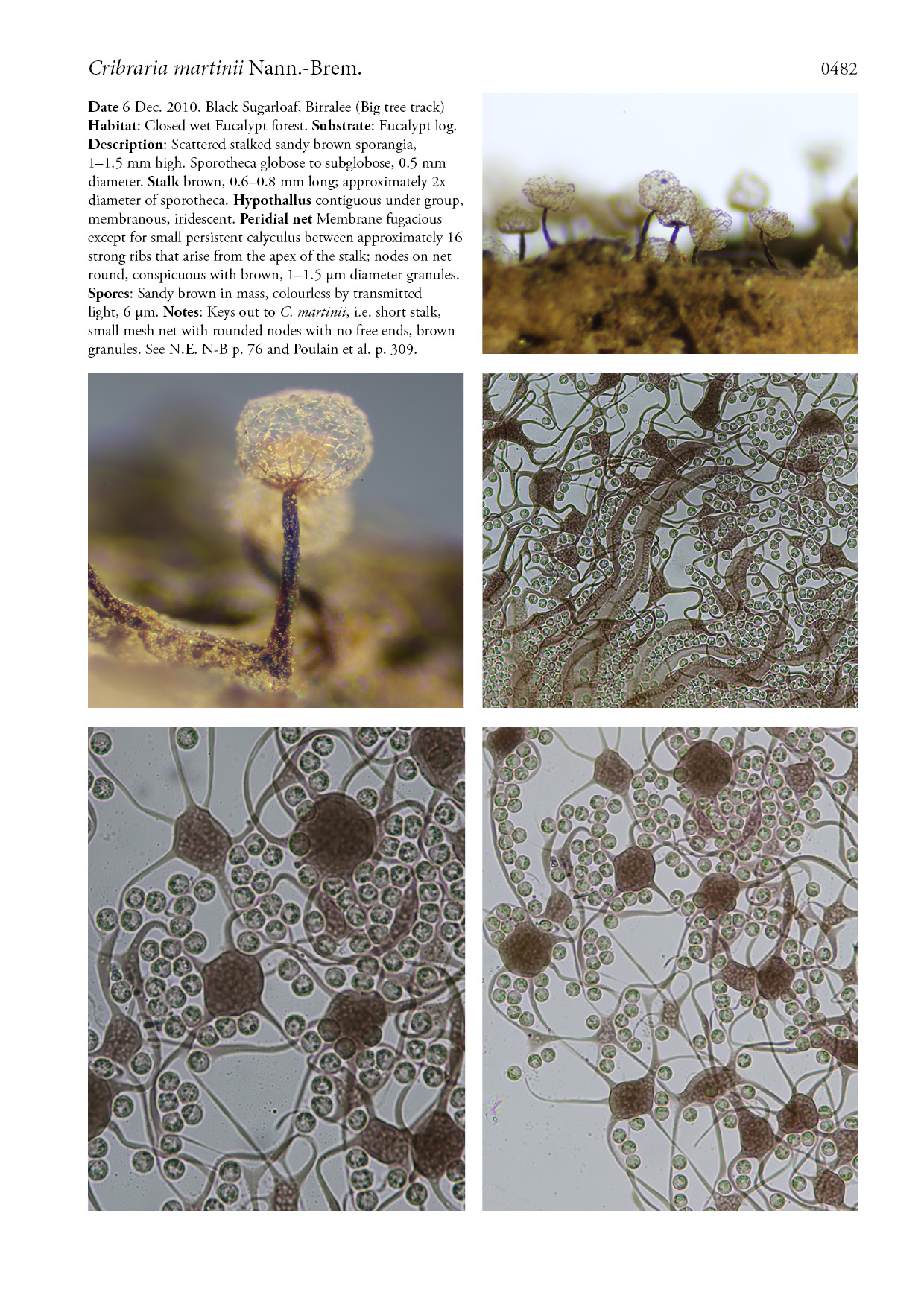
Cribraria oregana
Cribraria oregana: Peridial net remains as a conspicuous calyculus, faintly ribbed with numerous dark dictydine granules; nodes flattened and expanded; spores 7-8.5 µm. Close to C. vulgaris but with smaller sporangia and larger darker spores (Ing 1999). Regarded as a variety of C. vulgaris by Nann.-Bremek. (1991).
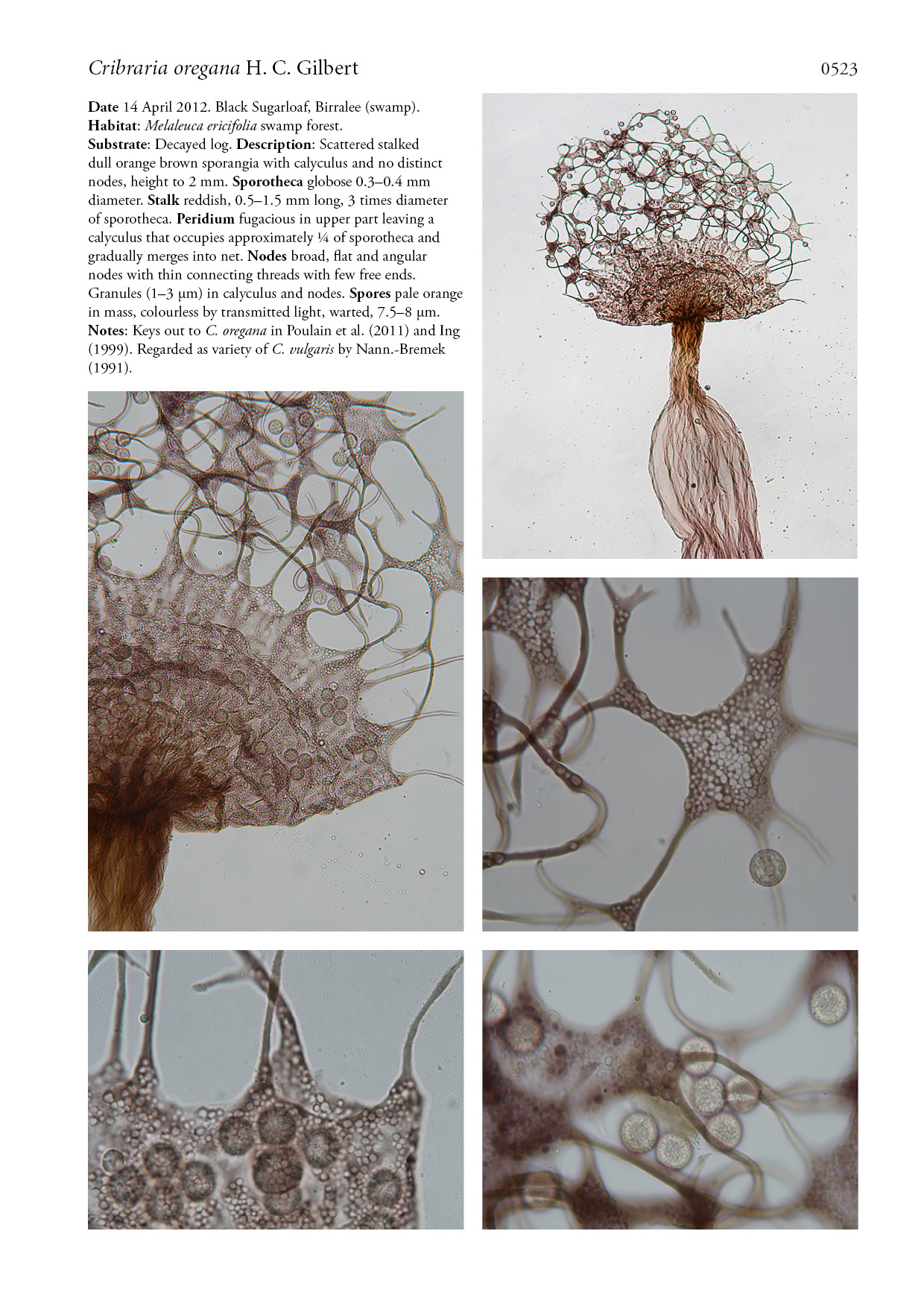
Cribraria splendens
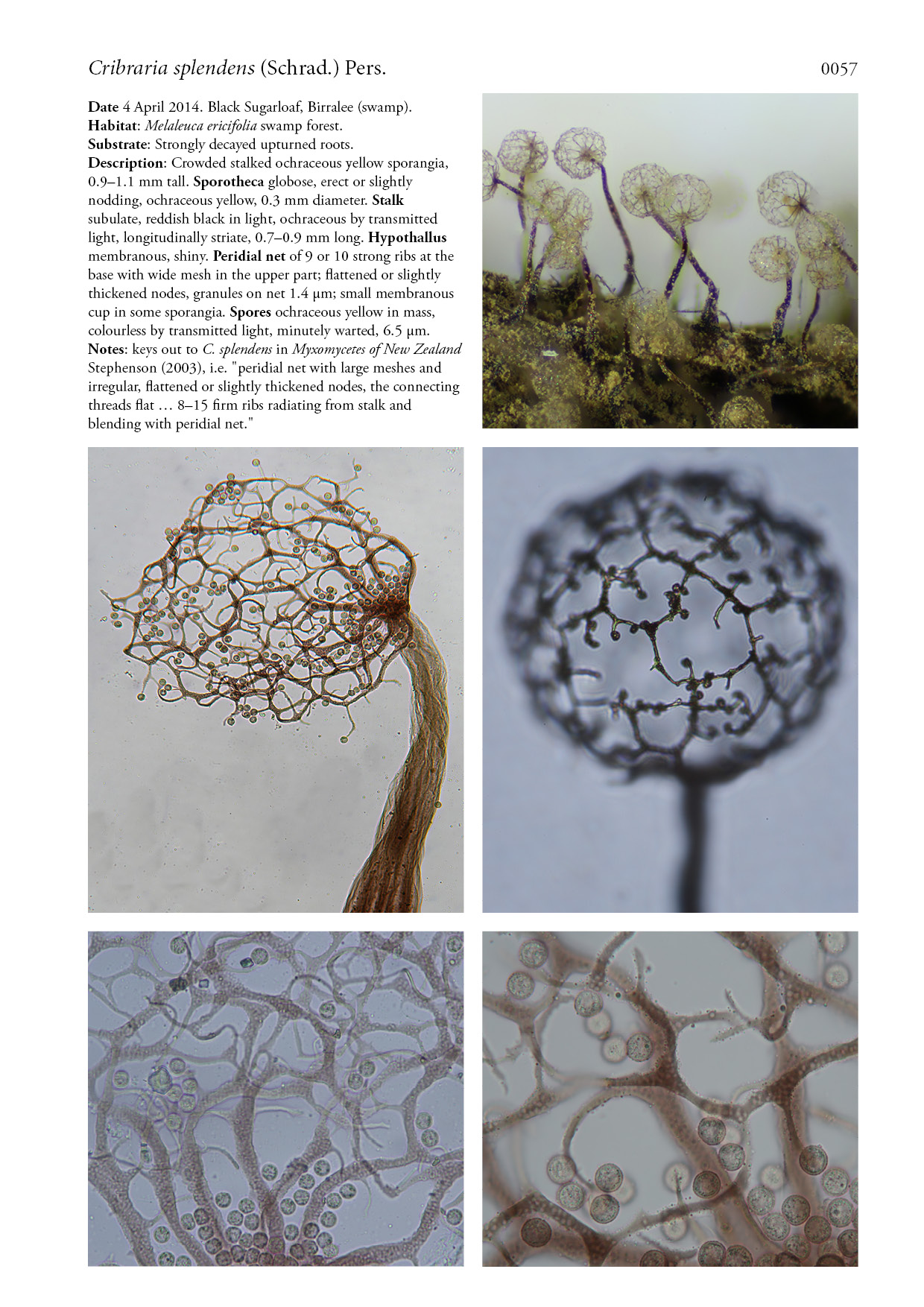
Reference:
Adamonyte, G. & Eliasson, U.H. (2010) ‘Morphological variation and taxonomic characters in Cribraria (Myxomycetes) from the Great Smoky Mountains National Park in Eastern USA.’ Nova Hedwigia 90, 3—4, pp.303-320, Stuttgart.
Ing, B. (1999) The Myxomycetes of Britain and Ireland: An Identification Handbook. Richmond Publishing Co., Slough.
Nannenga-Bremekamp, N.E. (1991) A guide to temperate myxomycetes. Biopress Limited Bristol.
Poulain et al (2011) Les Myxomycetes. Fédération mycologique et botanique Dauphiné-Savoie Le Prieure, Sevrier.
Stephenson, S.L. (2003) Myxomycetes of New Zealand. Fungi of New Zealand Volume 3. Fungal Diversity Research Series 11: 1-238.
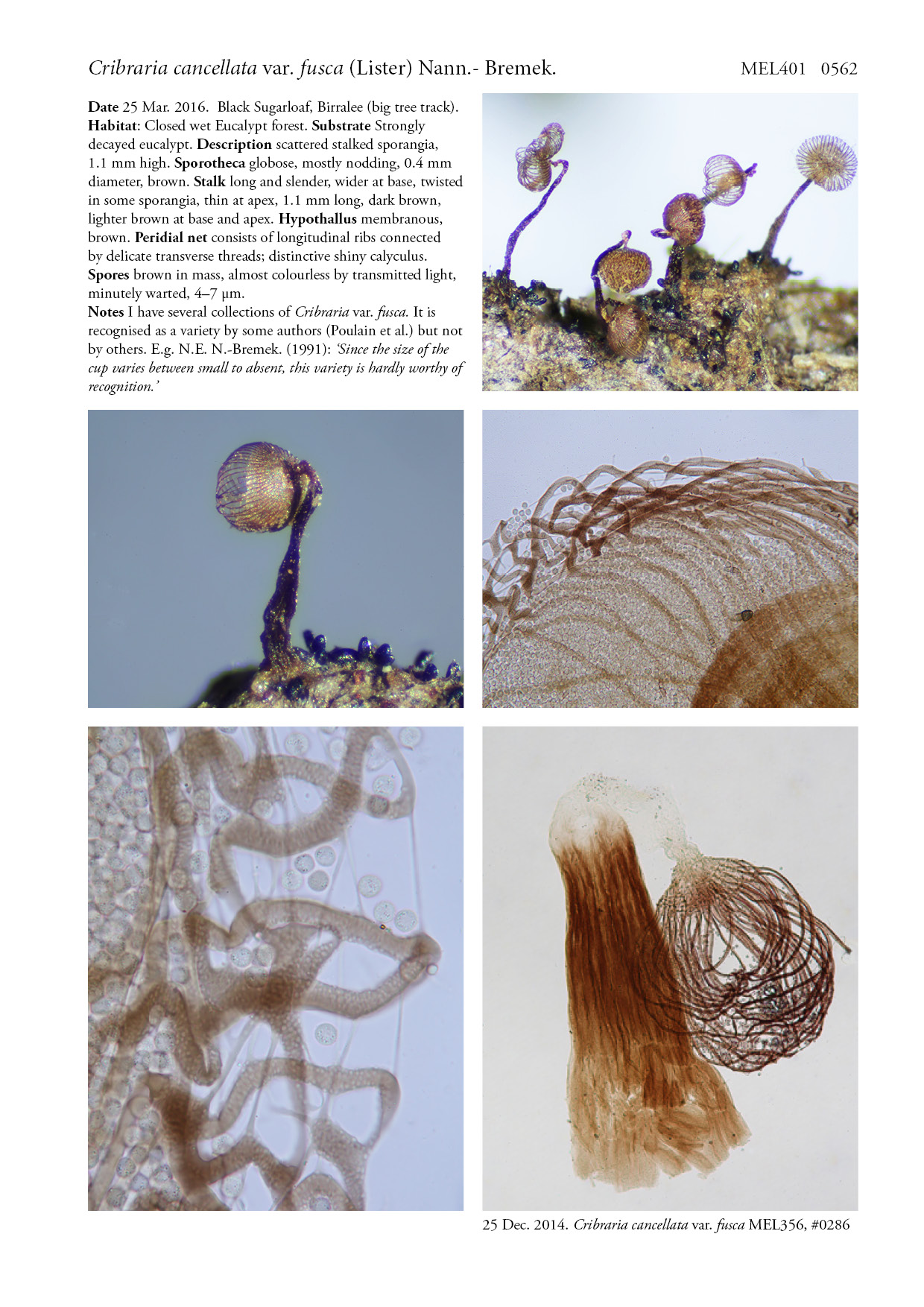
How can I thank you for your work, your photography, your discussions?
LikeLike
Thank you for your interest in my work. I hope you have found it useful.
LikeLike
wonderful! I take it your martiniis are on the rocks.
LikeLike
Of course they are!
LikeLike